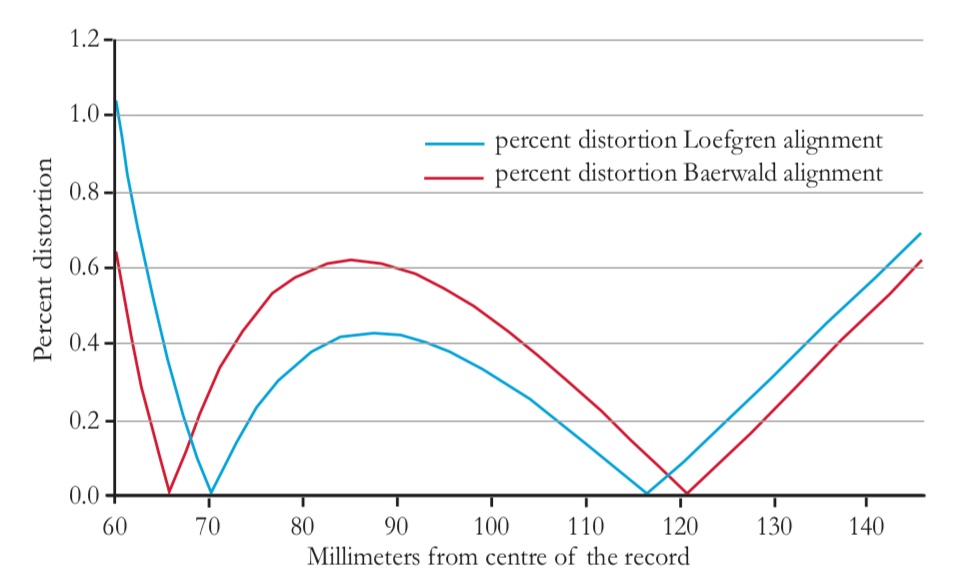If you are referring to the Audio Origami Protractor developed by vinylengine user Seb, then you may be confusing 'mid-point alignment' with 'inner null-point alignment'. Or, perhaps you are thinking of using the alignment method that returns lowest peak distortion at the mid-point between the two null points (i.e. Löfgren 'B').
Regardless, what Seb failed to make clear in his instructions (linked to below) is that this protractor offers both Baerwald (66mm inner null) and specifically Löfgren
'B' (70.3mm inner null) alignment. To confuse matters, Baerwald's work was the same as Löfgren's earlier work, known as Löfgren
'A' alignment, also resulting in a 66mm inner null and balanced tracking distortion peaks.
Löfgren 'A'/Baerwald (credit where credit is due, hence Löfgren first) results in equal percentage distortion peaks across the record, whereas Löfgren 'B' sacrifices the outer two for lowest peak distortion between the nulls, and so aiming for lowest distortion over the broadest continuous stretch of play. Basically, there are three such peaks; 1) at start of record, 2) between outer and inner null points, and 3) at end of record.
A lot of folk think these choices are critical, however, my own experiments have long since proven to me that the alignment choice differences are swamped by a given tip profiles ability to trace the groove more accurately than another, particularly so at near end of record side. As such, comparing the last track with the first can be quite telling here.
Another thing to keep in mind when considering these alignment methods is that even the loosest of them (wrt how high these distortion peaks are) only take 'tracking distortion' up to circa 1.0% from circa 0.6% across all three balanced peaks of Löfgren 'A'/Baerwald. It is important to note that tracking distortion is not to be confused with 'mis-tracking' (loss of groove wall contact), nor 'tracing error' (inability of a given shape to accurately follow the record cutter path) but, along with these, can certainly contribute to making things sound less convincing than they should.
http://www.audioorigami.co.uk/wp-content/uploads/2013/audioorigami-instructions.pdf
P.S. Where your Mission 774's intended (but slightly missed first time round) Stevenson alignment comes into its own is at the IEC 1958 / RIAA 1963 (60.325 mm) spec for end of last track, i.e. the 60mm point of the graph above being inner null zero tracking distortion point with Stevenson coinciding with where the record 'should' end. Makes perfect sense when this last 10mm is the most difficult to trace accurately (albeit, the initial start of record distortion peak of Stevenson is higher than the others, however, this is where tracing is least difficult for any tip profile).


